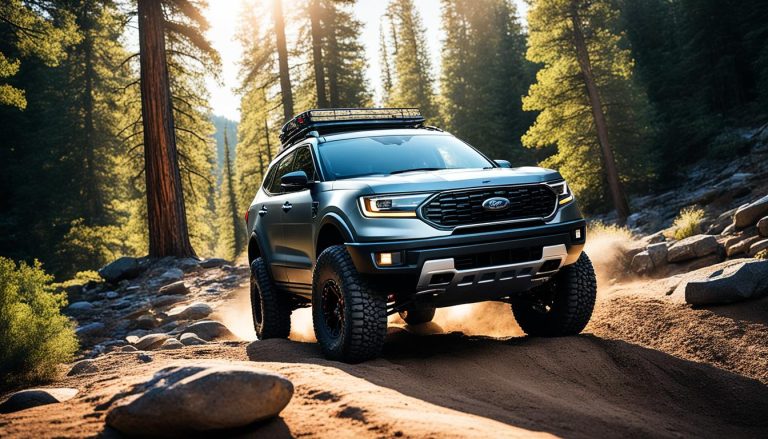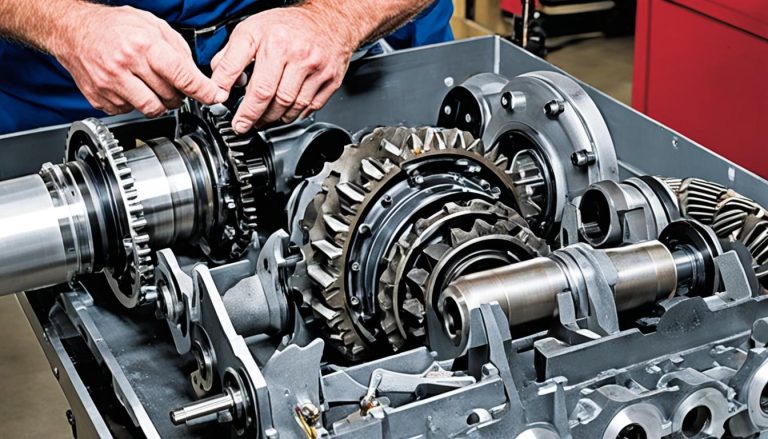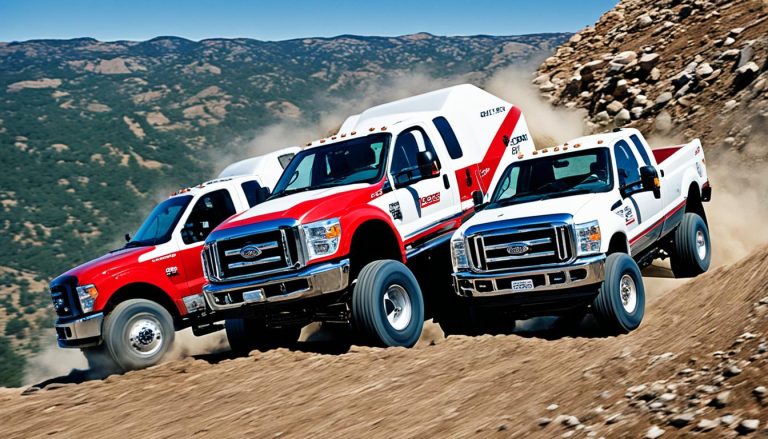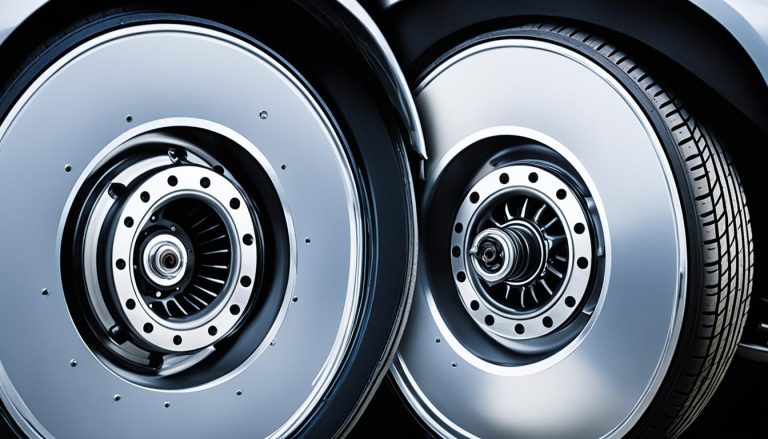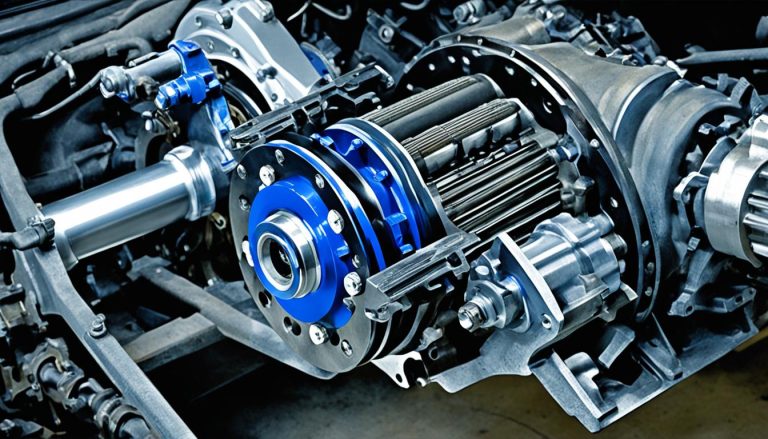Ford Focus RS: Troubleshooting Limited Slip Differential
If you’re the proud owner of a 2018 Ford Focus RS, navigating the performance landscape of your vehicle can be thrilling yet intricate, especially when it comes to your Limited Slip Differential (LSD). You may find yourself in the middle of an ongoing debate about the contributions of an LSD to day-to-day performance concerns. While on one side of the argument, you have drivers who swear by the enhanced handling in snowy or icy conditions, on the other, some hold that its daily street performance impact is negligible. Understanding and troubleshooting limited slip differential problems are crucial whether you’re considering an LSD upgrade aligned with other repairs like a clutch replacement or just aiming to keep your ride in peak condition. This repair guide will take you through the essentials of LSD concerns in your Ford Focus RS and ensure your vehicle retains its performance edge.
Key Takeaways
- Discover the impact an LSD can have on the performance of your Ford Focus RS, particularly in challenging driving conditions.
- Learn the differences in handling and ride comfort between the 2016-2017 and 2018 model years to make informed decisions about upgrades.
- Explore when and why to consider an LSD upgrade, and how it fits with other maintenance needs.
- Recognize common limited slip differential problems and the symptoms that may prompt a visit to the mechanic.
- Gain insights into the subjective nature of the LSD’s benefits and weigh them against the cost and labor involved.
Understanding the Limited Slip Differential in Your Ford Focus RS
Embarking on a journey through the mechanics of your Ford Focus RS reveals the critical role played by the limited slip differential (LSD)—a feature crucial for performance enthusiasts and everyday drivers alike. Let’s delve into the workings of an LSD and its importance in delivering power where it’s needed most.
What Is a Limited Slip Differential and How Does It Work?
The limited slip differential is engineered to overcome common traction issues, especially in powerful vehicles like the Ford Focus RS. Unlike a standard differential that can send power to the wheel with the least resistance, the LSD smartly allocates torque between the wheels—limiting slip and ensuring that both wheels can propel you forward, even if one has less grip. This intelligent distribution of power mitigates limited slip differential problems and enhances performance, particularly when accelerating out of corners or when one wheel is on a less grippy surface.
Differences Between the 2016-2017 and 2018 Focus RS Models
The 2016-2017 Ford Focus RS models were celebrated for their raw power and dynamic handling but lacked the LSD found in the 2018 variant. With the introduction of the LSD in the 2018 model, performance concerns linked to differential failure and traction were significantly alleviated. While the 2018 Focus RS brought forth a more refined suspension setup contributing to a smoother ride, it did come with the trade-off of increased wheel hop and a change in launch feel compared to its predecessors. For the spirited driver eyeing the track, these changes underscored the importance of troubleshooting limited slip differential problems and understanding the nuances between the different model years.
If you’re experiencing suspect handling or other common issues emanating from the differential in your vehicle, recognizing the distinctions between the 2016-2017 and 2018 Ford Focus RS models will inform your troubleshooting efforts and guide any potential upgrades. Whether tackling curvy roads or facing slick conditions, knowing the inner workings and version-specific traits of your LSD can maximize your car’s performance and keep you firmly on asphalt.
Limited Slip Differential Problems: Tracking Performance Issues
If you’re experiencing inconsistent performance with the limited slip differential in your Ford Focus RS, you’re not alone. Some owners report a notable enhancement in handling, particularly during spirited drives on tracks or winding canyon roads. The question is, are these improvements thanks to upgrades to the LSD, or could there be underlying limited slip differential problems at play?
When it comes to troubleshooting these issues, several factors can affect the performance of the LSD. Some drivers suggest that waiting to reach a certain mileage or planning your LSD upgrade alongside other maintenance tips, like a clutch replacement, may be more cost-effective and impactful.

But how can you discern if your LSD is underperforming? Here are some common issues and tell-tale signs:
- Reduced traction during acceleration, especially in slick conditions.
- Unexpected wheel spin when launching the vehicle or coming out of curves.
- A feeling that the car isn’t handling as sharply or responsively as it should.
Before deciding on an upgrade or repair, it’s essential to accurately diagnose the problems with your Ford Focus RS differential. Carefully evaluating the performance and considering all factors will ensure that any investment into your vehicle is both necessary and beneficial.
Common Issues and Solutions for the Focus RS Limited Slip Differential
Driving the iconic Ford Focus RS, you might savour the vehicle’s spirited performance, but be aware that like all high-performance vehicles, it’s not immune to issues. This section focuses on the limited slip differential, a cornerstone of your RS’s gripping performance, which occasionally can present common issues such as differential failure and noise problems. Understanding these problems is the first step in troubleshooting and ensuring your RS runs smoothly.
Recognizing the Symptoms of Differential Failure
Have you noticed any irregularities in wheel slip or handling with your Ford Focus RS? If so, these inconsistencies might be more than just an off day on the road; they could indicate limited slip differential problems. Differential failure symptoms range from uneven wheel slip, particularly on cold days, to unexpected wheel spin during aggressive launches or tight cornering.
How Differential Noise can Indicate Underlying Problems
Another telltale sign of trouble is an unusual sound emanating from the differential. If your Ford Focus RS begins to produce a consistent whining or rumbling noise upon acceleration or deceleration, consider this an SOS from your vehicle. Such noises could signify wear or damage to the differential gears necessitating a thorough inspection and, if confirmed, repair or replacement to maintain the performance and safety of your car.

Both identifying symptoms and hearing differential noise can present a daunting troubleshooting challenge. To help you assess and address these issues, refer to the following table outlining common problems, potential causes, and suggested solutions:
| Common Symptoms | Potential Causes | Suggested Solutions |
|---|---|---|
| Uneven wheel slip or spin at launch | Wear in differential components | Inspection and repair of LSD unit |
| Whining/rumbling noise | Differential gear wear or misalignment | Differential fluid check, gear adjustment or replacement |
| Handling not as responsive | Limited slip differential engagement issues | Inspect differential clutch pack, replace if necessary |
When you encounter limited slip differential problems in your Ford Focus RS, don’t hesitate to investigate and take corrective action. Doing so will maintain the precise control and exhilarating driving experience you expect from your Focus RS. Stay ahead of common issues and ensure your vehicle remains an epitome of performance excellence.
Limited Slip Differential Problems Ford Focus RS: When to Upgrade
If you’re the proud owner of a Ford Focus RS and are debating whether to upgrade your limited slip differential (LSD), understanding your driving priorities is key. For the performance enthusiasts who crave the adrenaline rush of aggressive driving and frequent track days, investing in a differential upgrade can be a game changer. The enhanced LSD version stands to offer substantial improvements in your vehicle’s handling and traction, essential for that razor-sharp cornering precision on the track.
On the other hand, if your Ford Focus RS serves primarily as a daily driver, your decision might differ. The cost-benefit ratio of an LSD upgrade doesn’t necessarily tip the scales for urban cruising and regular commutes. Always weigh your performance needs against the financial implications. Your upgrade timing should ideally coincide with certain mileage benchmarks or maintenance schedules – aligning an LSD upgrade with other repairs could be a smart financial move. Utilize a thorough repair guide and follow expert maintenance tips to ensure you make an informed decision.
Monitor your vehicle closely for any signs of differential performance issues. If you start noticing nuances in your ride that suggest the onset of LSD problems – perhaps a lack of that sharpness in your execution of tight turns or subpar traction while accelerating – it might be time to consider an upgrade. Remember, optimally timing an LSD improvement can enhance your Ford Focus RS driving experience, ensuring you benefit from every ounce of engineering this powerful machine has to offer.
FAQ
What is a limited slip differential, and how does it impact my Ford Focus RS?
A limited slip differential (LSD) is a type of differential that helps provide better traction by distributing power to the wheels in a way that prevents excessive wheel spin. In particular, the Ford Focus RS benefits from improved handling and stability during acceleration and in slippery or snowy conditions with the presence of an LSD.
How do the 2016-2017 and 2018 Ford Focus RS models differ in terms of the limited slip differential?
The 2016-2017 Ford Focus RS models did not come equipped with an LSD. The 2018 model introduced an LSD which offers improved performance in handling, particularly while cornering and in adverse weather conditions. There are also changes in suspension tuning in the 2018 model for a more comfortable ride compared to earlier versions.
What are some common signs of limited slip differential problems in the Ford Focus RS?
Common signs of LSD problems include uneven wheel slip, wheel spin during acceleration or straight out of turns, and a decrease in handling sharpness, particularly when accelerating during cornering. Noise issues, like consistent whining or rumbling sounds, are also indicators of potential differential problems and should be investigated promptly.
When should I consider an upgrade to the limited slip differential on my Ford Focus RS?
An upgrade to the LSD might be worth considering if you regularly engage in high-performance driving or frequent track days, as it can greatly enhance handling and traction. However, for daily commuting, you may want to weigh the cost against the benefits as the improvements may not be as noticeable. Timing the upgrade with other necessary maintenance, such as a clutch replacement, could also be more cost-effective.
Are there any maintenance tips for the limited slip differential on a Ford Focus RS?
Maintenance of your LSD should include regular checks of the differential fluid for signs of contamination or metal particles, which can be indicative of wear or damage. Also, ensure that appropriate servicing intervals are maintained as per your vehicle’s manual. Address any unusual noises or changes in vehicle handling immediately to prevent further damage.
How can differential noise hint at problems in my Ford Focus RS?
Differential noise, often manifesting as a whining, howling, or rumbling sound during acceleration or deceleration, can reveal issues within the differential gears or bearings. Such noises are not normal and typically mean that the differential is in need of inspection, repair, or possibly even replacement.
What driving conditions can showcase the advantages of having an LSD in the Ford Focus RS?
The advantages of an LSD are most apparent in situations requiring improved traction and handling, such as driving on snowy or icy roads, navigating tight corners, or while performing aggressive maneuvers on racetracks. The LSD can help prevent excessive wheel spin and ensure better control of the vehicle.
Can installing an LSD on my Ford Focus RS eliminate wheel hop and improve the ride over bumps?
While an LSD can reduce wheel spin and improve traction, it does not eliminate wheel hop or improve the overall ride quality over bumps. Suspension tuning and other modifications would be necessary to address ride comfort and wheel hop concerns.


